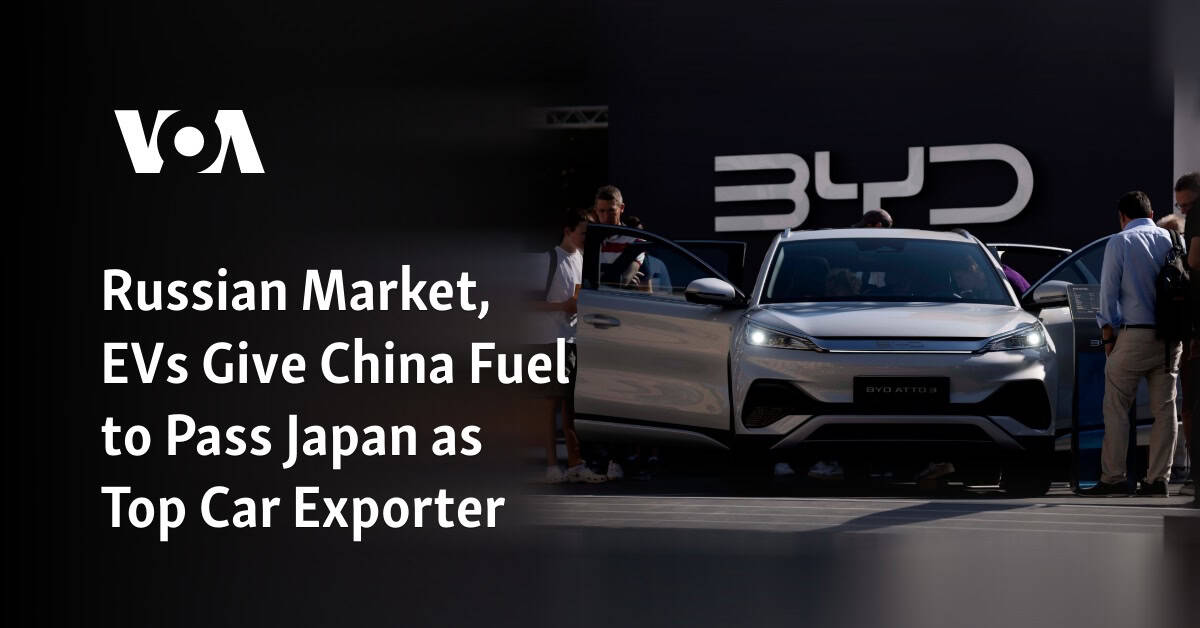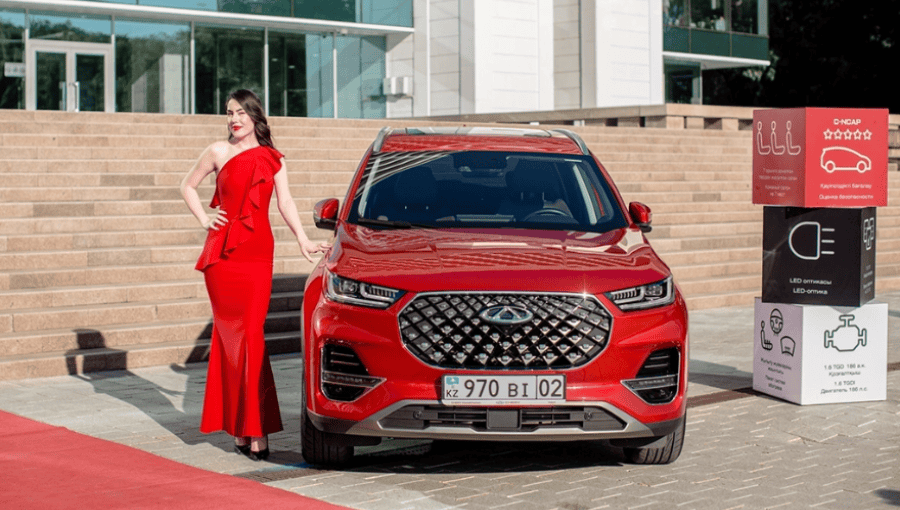Helping China become the world’s largest automobile exporter, the Russian auto market is “China fever”. What will be the trend in 2024?
February 5, 2024 Tina
2023 will witness the popularity of Chinese cars in overseas markets.
Data from the China Association of Automobile Manufacturers shows that China will export 4.91 million complete vehicles in 2023, a year-on-year increase of 57.9%. Among them, 1.203 million new energy vehicles were exported, a year-on-year increase of 77.6%.
As the world’s largest automobile exporter in the past, the latest data released by the Japan Automobile Manufacturers Association on January 31 showed that Japan’s automobile export volume in 2023 will be 4.42 million vehicles. This figure is lower than China’s previously announced automobile export volume. As a result, China’s automobile exports surpassed Japan for the first time and ranked first in the world.
According to Xinhua News Agency, Xu Haidong, deputy chief engineer of the China Association of Automobile Manufacturers, said that the high growth rate of China’s automobile exports in 2023 is largely due to the increase in the Russian market. Overall, nearly 800,000 vehicles were exported from the Russian market.
In 2023, the bilateral trade volume in goods between China and Russia will reach 240.1 billion U.S. dollars, an increase of 26.3% over the previous year, and the goal of 200 billion U.S. dollars will be completed one year ahead of schedule.

Russia’s market share has grown significantly
A market survey recently released by Otklije Bank, a large Russian commercial bank, shows that in 2023, the share of Chinese brand cars in the Russian market will increase to 49%. During the same period, the market share of Russian brand cars increased from 29% to 33%, while the share of Korean, Japanese, and European brand cars has dropped to about 4%, and the share of American brand cars is only 1%.
Data from Autostat, a Russian automobile analysis agency, shows that among the top 10 best-selling car brands in Russia in 2023, except for Russia’s local Lada (30.6%), which occupies the first place, Chinese brands rank second to sixth. As of the end of December 2023, Chinese passenger cars accounted for 76.1% of new imported cars in Russia and 2.3% of imported second-hand cars.
When Yang Jie, general manager of Eurasian Railway International Freight Forwarding (Shanghai) Co., Ltd., returned to Moscow last year, what impressed him most was that the taxis on the streets of Moscow had changed from the original Korean brands Kia and Hyundai to Chinese brands. However, Currently, most private cars are foreign brands. “In general, Chinese cars still occupy the commercial field dominated by taxis and car rental companies, and most of them are fuel vehicles.”
Taking data from the Moscow Municipal Government as an example, in the Moscow taxi market, South Korea’s Hyundai will occupy the first place in 2021, and Chinese brand car companies have almost no share. Just two years later, in 2023, China’s Chery, Geely, Haval, JAC, etc. will be among the top ten. Among them, Chery has replaced Kia as the largest foreign brand of taxis in Moscow.
Starting from July 2022, the Russian Yandex car sharing company will renew its fleet in various cities such as Moscow, St. Petersburg and Sochi in stages by purchasing hundreds of Chinese brand cars such as Geely’s Cooly, Haval and Chery Tiggo, and the fleet will be updated. The process continues. In addition, Russian car rental companies are also very fond of Chinese brand cars.
Yang Jie told China Business News that at present, Chinese brand car companies mainly export to Russia by sea transportation, and some enter the Russian market through the Horgos Port via trucks in the name of second-hand cars through Kazakhstan.
Zhang Hanhui, Chinese Ambassador to Russia, said at the Second China-Russia Automobile Industry Forum held in November last year that automobile cooperation has become a highlight of economic and trade cooperation between China and Russia. China has become Russia’s largest vehicle importer, and Russia has also become China’s largest automobile export destination. Chinese car companies continue to delve into the Russian market, launching nearly a hundred new models and creating a variety of star products, which greatly meet the needs of Russian consumers.
Simplified certification procedures for parallel imported cars extended to 2027
There are also active foreign brands in Russia that enter the Russian market through “parallel import” channels. “Parallel import” refers to the act of an importer in a country importing into that country products that have been legally put on the market in other countries by the right holder or with the consent of the right holder without the authorization of the right holder who enjoys intellectual property rights in that country. Such behavior was previously banned in Russia.
After the conflict between Russia and Ukraine broke out in 2022, the United States and Europe launched unprecedented large-scale sanctions on Russia. In response to sanctions, the Russian government revised its laws and implemented “parallel imports” to counter the sanctions imposed by “unfriendly countries” on Russia. Russian media data shows that “parallel imported” goods will account for 12% to 15% of Russia’s total imports in 2023. However, parallel imported cars account for a small proportion of Russia’s new passenger car imports. Taking December 2023 as an example, they accounted for only 8%, a decrease of 3 percentage points from 11% in October.
On February 1, the Ministry of Industry and Trade of the Russian Federation decided to extend the simplified car certification process (OTTC) through parallel import channels until the end of 2027, and stated that this measure aims to provide Russian consumers with a richer range of market segment cars. source.
Russian economist Alyosha told China Business News, “This series of operations by the Russian government are actually mainly aimed at European and American goods. The ‘import of European and American goods’ from Kyrgyzstan or Belarus is equivalent to leaving a gap for European and American brands to be sold in Russia.” ‘Window’. Most of Chinese car companies’ local sales are through 4S stores and other channels, and the Russian government also encourages car companies to establish official sales channels in Russia.”
Alyosha emphasized that due to the Russian government’s repeated policy adjustments, the space for entering the Russian market through “parallel imports” will definitely become smaller and smaller in the future. “Russian customs has previously taken action to crack down on low-price declarations from Kyrgyzstan and Armenia.” Illegal trading activities of imported vehicles.”
For this year, analysts from Otklije Bank, a large Russian commercial bank, believe that in 2024, the sales of Chinese cars in the Russian market are expected to further increase. According to Russian Autostat predictions, 30 to 45 new models of Chinese brands will be launched in the Russian automobile market in 2024, and approximately 1.2 million new cars are expected to be sold, accounting for 80% of the local market share.
Alyosha also said that in the future, attention should be paid to whether the maintenance and other services of Chinese brand cars in the Russian market can keep up in time. “There are already some local Russian brands that regard Chinese cars as competitors.” Moreover, he also emphasized that the Russian government is currently It is also pushing its officials to use Russian-made cars. According to previous reports from Russian media, when Putin met with senior representatives of Russian manufacturing companies in August last year, he said that all Russian officials should use Russian-made cars.
Ambassador Zhang Hanhui also emphasized at the aforementioned forum, “China is willing to continue to leverage China’s automotive industry system’s complete supply advantages, rapidly iterative technology advantages and high-quality professional talents to deepen the industrial chain supply chain cooperation in the automotive field between the two countries. At the same time, , and also hope that Russia will provide policy support and convenience to Chinese automobile companies in taxation and other aspects, so that Chinese automobile companies can enter, retain, and develop well, and make Sino-Russian automobile industry cooperation a sustainable new driving force for the economic and trade development of the two countries.”




